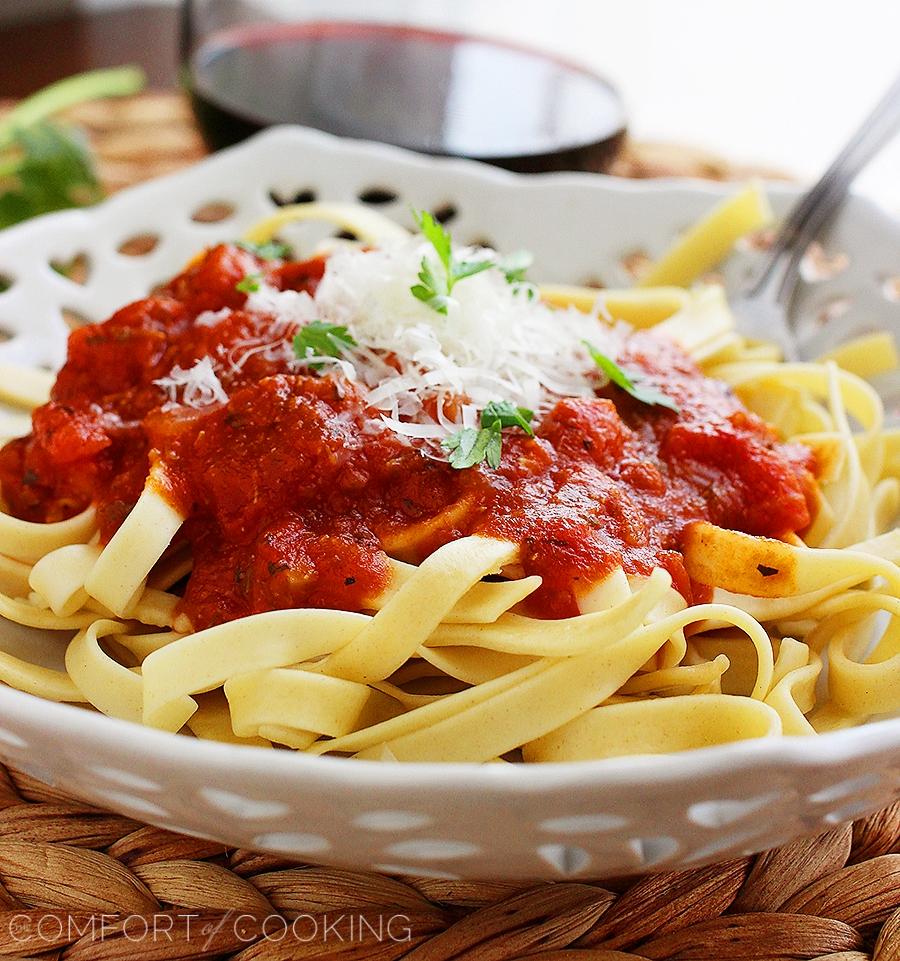
Homemade Pasta
Ingredients
For Pasta
- 2.5 cups "00" flour
- 4 large eggs
- 1/2 tsp. olive oil optional
Equipment
- For preparing: Mixing bowls plastic wrap, stand mixer, dough cutter
- For shaping: French rolling pin roller attachment, cutter or chitarra, manual cutter
- For drying: Large baking sheet extra flour
- For cooking: Large pot kosher salt, slotted spoon
Instructions
- Add flour to a large bowl. Make a well in the center; add eggs and yolk.
- Whisk eggs with a fork, and then combine with the flour. When the texture becomes stiff, finish by hand to form a rough dough. If dry bits of flour remain after a few minutes of mixing (be patient, it’s a dry dough) add a few drops of water or olive oil to bring the dough together.
- Form the dough into a smooth ball, cover with a bowl or kitchen towel. Let rest at room temperature for 10-15 minutes- it will be easier to knead.
- Knead the dough for 5-7 minutes. Do this by folding the dough over itself, pushing it forward with the heel of your hand, turning slightly as you go. The texture will be very stiff at first, but by the 2 minute mark it will start to soften. Keep kneading until the dough is soft, malleable and has a talcum-like finish. It should “bounce back” slowly when poked.
- Form dough into a ball, cover tightly with plastic wrap, and rest at room temp for 30 minutes.
- Divide dough into 3 portions. Dust your work surface with 00 flour. Also dust a shallow pan with flour (your pasta sheets will land here). Fit the stand mixer with the roller attachment.
- On your work surface, cut the pasta dough into 4 pieces. Working with one piece at a time, flatten the dough into a 6-8inch oval patty. Keep the remaining dough covered.
- Set the pasta roller to #1 which is the lowest/widest setting on the Kitchen Aid. With the machine running, send the dough through the roller. Repeat once more.
- Continue to roll the dough through settings #2-4, (2x) on each setting. Do not pull on the sheet as it comes through the roller; just guide it along gently. If at any point the dough becomes sticky, dust with flour.
- Your pasta sheet is ready once it is thin and somewhat translucent (you should be able to see your hand underneath).
- Dust the pasta sheet generously with flour, fold it in half, and place onto your floured sheet pan. Cover with a kitchen towel. Repeat the rolling process for the remaining 3 dough portions. If desired, cut into long ribbons or shapes, and allow to air dry slightly before cooking.
- See "Notes" for cooking or storing instructions.
Video
Notes
• Make space. You’ll need a long, clutter-free work surface to handle the dough. The kitchen table or kitchen island is perfect.
• Pasta dough can dry out quickly. Keep it covered with plastic wrap or a kitchen towel.
• To Store: Heavily dust the pasta strands with flour. Coil around your hand or arrange loosely on a tray. Cover with plastic wrap and hold atroom temperature if cooking within 1-2 hours. Alternatively, store in the fridge for up to 12 hrs. checking occasionally, to make sure the strands are not sticking. Note: Pasta left in the fridge past 24 hrs might oxidize, discolor and/or stick together.
• To Freeze: Allow the pasta to air-dry, uncovered, for 15-20 minutes before freezing. The helps to prevent sticking. Portion into zip top bags,remove the air, and freeze up to 1 month. Cook directly from frozen, no need todefrost first.
• To Cook: Bring a large pot of salted water to a boil. Cook pasta to al dente, about 3 minutes. Test doneness by trying a piece. If it has a slightchew, it's ready. Remove from heat and drain pasta, tossing with desired sauce.Top with fresh basil.